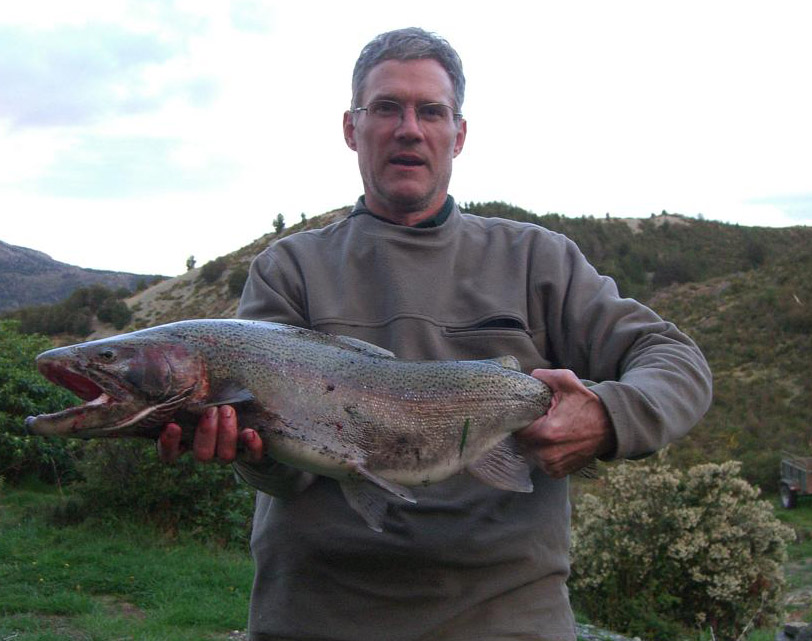
By Glenn Wiser, Chemicals Program
I was fishing a mountain stream at my friend John’s place in Chilean Patagonia recently when I hooked a 27-inch wild rainbow trout. After chasing the fish halfway down the river, I succeeded in hauling it onto the gravel bank, where I quickly did some mental math: rainbow trout is typically low in mercury; bioaccumulation means this big fish may contain higher levels; rushing mountain stream probably doesn’t support production of much methylmercury. My result, unfortunately for the fish, was fresh rainbow trout fillets for dinner, which John and I washed down with an excellent local sauvignon blanc.
When John and I were working in Santiago the week before, we ate in seafood restaurants every night because I prefer not to eat beef. But our choices quickly grew thin: tuna was out because of high mercury levels, halibut out, swordfish obviously out, and Chilean sea bass out due to unsustainable fishing practices. That left trout or tilapia for me. John didn’t mind the dearth of choices because, as a native Australian, his search of the seafood menu ends when he finds the fish and chips.
For a would-be piscivore, it’s a drag knowing that most any fish I eat is contaminated with mercury to some extent. Freshwater rivers and lakes that aren’t subject to a mercury advisory in the United States are becoming an endangered species. But what really bothers me is when I think of my 11-year old daughter, Elizabeth. Her body and brain are still growing, and even small amounts of mercury can interfere with her development. If Elizabeth ever has children, some of the mercury accumulated in her body will pass to them and impact their health the entire time they’re in her womb, as well as afterwards when she breast feeds them.
Where does all of this mercury come from? Isn’t it a naturally occurring element?
Yes, but the unique qualities of mercury—at room temperature, it’s the only liquid metal—have long made it a desirable input to many products and industrial processes. Mercury is found in batteries and electronics, thermometers and other measuring devices, dental amalgam for filling cavities, and fluorescent lights, including compact fluorescents that are so important for saving energy. Mercury is still used to produce chlorine and caustic soda and polyvinyl chloride plastics. And it’s still used by hundreds of thousands of artisanal and small-scale gold miners throughout the developing world to separate gold from ore, despite the devastating impacts it can have on them, their families, and the surrounding environment.
Because all of this mercury that people use is an element, it never breaks down into something benign. Once we mine it from the earth’s crust where it naturally occurs and introduce it into our human environment, that’s where it stays. Forever.
Worse still, the largest source of mercury pollution isn’t from mercury we use intentionally—it’s from the mercury we unintentionally release when we burn coal, oil, and natural gas. The amount of mercury in a lump of coal is tiny, but the United States, India, China and much of the rest of the world burn a lot of coal. The mercury adds up, because all fossil fuels contain trace amounts of it. When that mercury goes up the smoke stack, it may drift in the air for a short or long time, sometimes traveling thousands of miles, but eventually it will settle on the land and water, where some of it will transform naturally into methylmercury. And that’s the form of mercury that readily biomagnifies and bioaccumulates in fish and, ultimately, in us.
As you can see, mercury pollution is a big, complex problem that goes far beyond my calculations of whether or not I’ll have trout for dinner. In my next blog, I’ll describe some of the things CIEL and the global community are doing to solve it.
Originally posted on November 18, 2015.
